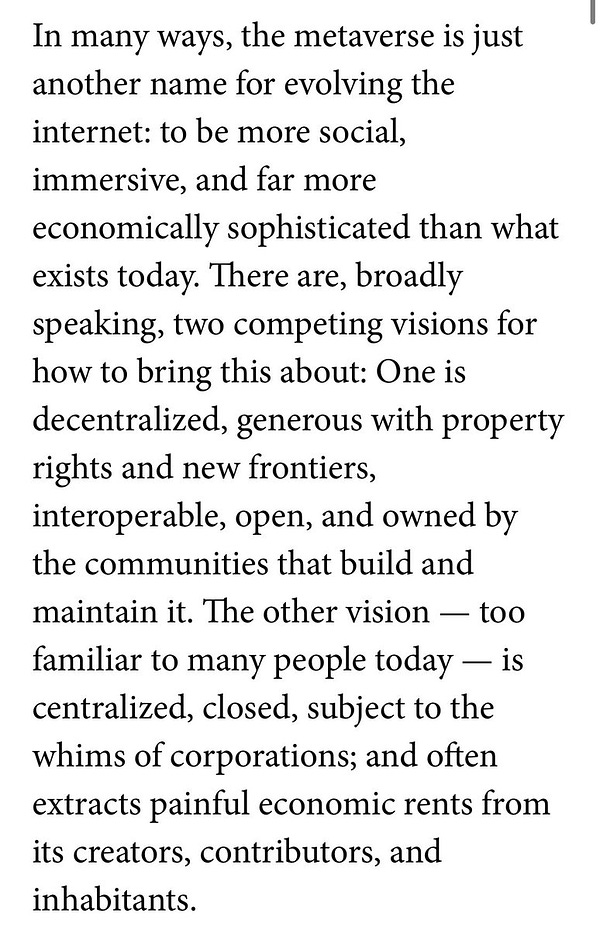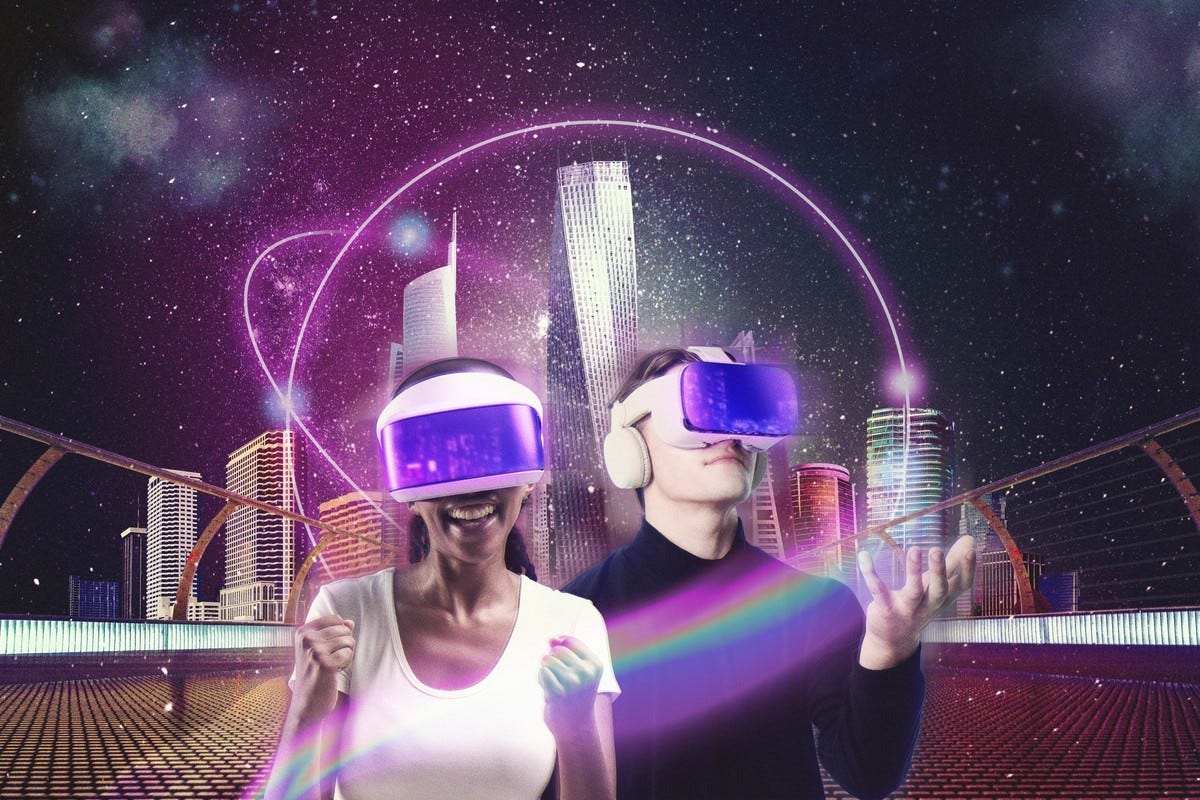GM, I’m Shreya 👋
And this is Crypto Creatives. Every Thursday, you get one of the following:
An atomic essay
Opportunities for creators in Web3
News about the Web3 Creator Economy
If you’re excited to be a part of the upgraded Creator Economy, welcome home!
Last year in September, I’d hear Slack notifications in my sleep. That was how I was engrossed in work.
That’s not it.
My phone would ring in my dreams; I would get anxious thinking about another work screen I’d be staring at.
Zoom, Slack, and Gmail — my life circled around these three. I didn’t know what was happening outside of that circle.
There was barely any difference between my work life on screen as a remote worker and a real life of a 27-year-old woman.
I was living in the Web 2 metaverse way before I understood what metaverse meant.
We don’t acknowledge how many significant events we’ve crossed recently. One such has been the rise of the metaverse, the most buzzed world and highly theoretical concept of living on the blockchain.
But are we already living in the metaverse?
Let’s find out.
The Web 2 Metaverse
Last week I was singling the trending reel songs at the dining table without realizing it. It irked my sister, and she suggested I use Instagram less.
It sounded fair, but it was not the only thing I had taken from the social media world in my existence. I was looking through filters while clicking pictures; I was sending my avatar, using it more than my images.
Sometimes the games I’d play on-screen appear in fragments and pieces as I do my chores. But, we are already in the Ready Player One created by the tech companies.
Oxford dictionary defines the Metaverse as a virtual-reality space in which users can interact with a computer-generated environment and other users.
The realm of a metaverse in Web 3 is based on immersive internet using AR VR. It’s beyond + the universe we live in.
It’s simply an advancement of our digital self.
It’s our online life, building networks with people we meet on the internet. As the difference between our virtual and real life is reducing, the metaverse has made a place for itself in our lives.
The worst part? We don’t even see it.
We hear the reel sound; we live through the filters; we buy assets; we talk to people we meet on these platforms — we are already living a semi-virtual life.
The lack of Oculus and other gears in our existence metaverse doesn’t give the appeal that we’re living one reality to enter another; it’s smooth.
It’s a click away without connecting wallets or creating an avatar on most platforms, but it’s there.
Avatars, NFTs, and virtual reality straight from your wildest dreams are an essential part of the metaverse. Still, the fundamentals are similar to what we’ve been experiencing in the previous internet world.
General partner at the venture capital firm Andreessen Horowitz, Chris Dixon, has similar thoughts about the metaverse, which he shares in this tweet below.


The new 3D filters and virtual spaces with vivid imagery are the additions that make the new internet more lifelike.
Seeing companies invest billions of dollars in the Metaverse and Facebook’s rebrand to Meta, metaverse search spiked on Google.
People got more serious about it and called it the future of the internet. The mix of decentralization and ownership makes me highly lucrative, with companies pouring billions into it.
Recent research shows that in 2021, the average time spent on the internet per person was around seven hours per day. The high numbers are not surprising with remote work and entertainment, most binge-watching Netflix and gaming.
All of this is to make people start living in the Metaverse and make a Second Life on the internet. But we already have that.
We’re living in the Metaverse
People created a one-page website when they heard about the new tech revolution of the internet.
One-page text website became a two-page version.
Images were introduced to make them succinct. Everyone wanted to bring more personality to those text-heavy web pages; images, videos, and live telecasting were added.
This advancement allowed people to feel more connected.
The technology now allows users to become a part of the internet. And internet to feel like home.
For some, that home may be to buy virtual real estate and live in Decentraland or Bit Country; but for some, it could be being on their phone for half a day to connect with their community or have a new (virtual) identity.
The future Metaverse will combine the elements of our lives in one virtual space for work, entertainment, and socializing, and that’s what we’ve been doing all this while.
Wondering how the creators can leverage the metaverse? Check this out.



